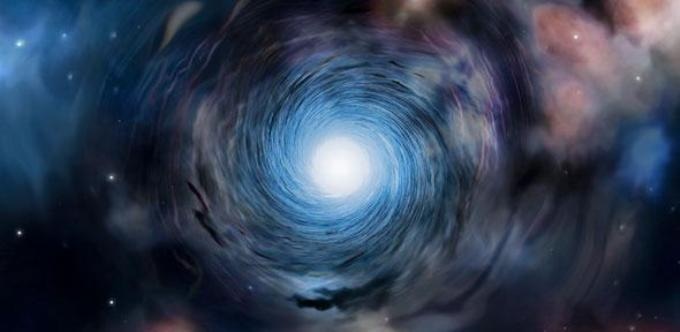Jan 12 2018
Astronomers have looked back to a time immediately after the Big Bang and identified swirling gas in some of the earliest galaxies to have been developed in the Universe. These ‘newborns’ – observed as they appeared almost 13 billion years ago – rotated like a whirlpool, similar to the very own Milky Way.
This is indeed considered to be the first time that it has been possible for detecting movement in galaxies at such an early point in the history of the Universe.
 Image credit: University of Cambridge
Image credit: University of Cambridge
A global team headed by Dr Renske Smit from the Kavli Institute of Cosmology at the University of Cambridge employed the Atacama Large Millimeter/submillimeter Array (ALMA) in Chile to open a new window onto the distant Universe, and have for the very first time succeeded in discovering normal star-forming galaxies at an extremely early stage in cosmic history with this telescope. The results have been reported in the journal Nature, and will further be presented at the 231st meeting of the American Astronomical Society.
Light from distant objects consumes a lot of time to reach Earth, thus observing objects that are billions of light years away allows individuals to look back in time and then directly observe the creation of the earliest galaxies. However, the Universe at that time was filled with a concealing ‘haze’ of neutral hydrogen gas, which makes it tough to observe the formation of the very first galaxies with the help of optical telescopes.
Smit and her colleagues employed ALMA for observing two small newborn galaxies that existed only 800 million years after the Big Bang. By analyzing the spectral ‘fingerprint’ of the far-infrared light gathered by ALMA, they succeeded in establishing the distance to the galaxies and for the very first time, observed the internal motion of the gas that powered their growth.
Until ALMA, we’ve never been able to see the formation of galaxies in such detail, and we’ve never been able to measure the movement of gas in galaxies so early in the Universe’s history.
Dr Stefano Carniani, Co-Author
The researchers discovered that the gas in these newborn galaxies swirled and rotated in a whirlpool motion, similar to our galaxy and other, more mature galaxies much later in the Universe’s history. Even though they are relatively small – five times smaller than the Milky Way – these galaxies were developing stars at a greater rate than several other young galaxies. However, the researchers were surprised to realize that the galaxies were indeed not as chaotic as expected.
“In the early Universe, gravity caused gas to flow rapidly into the galaxies, stirring them up and forming lots of new stars – violent supernova explosions from these stars also made the gas turbulent,” stated Smit, who is a Rubicon Fellow at Cambridge, sponsored by the Netherlands Organization for Scientific Research. “We expected that young galaxies would be dynamically ‘messy’, due to the havoc caused by exploding young stars, but these mini-galaxies show the ability to retain order and appear well regulated. Despite their small size, they are already rapidly growing to become one of the ‘adult’ galaxies like we live in today.”
The data obtained from this project on small galaxies makes room for larger studies of galaxies during the first billion years of cosmic time. The research was partially funded by the European Research Council and the UK Science and Technology Facilities Council (STFC).